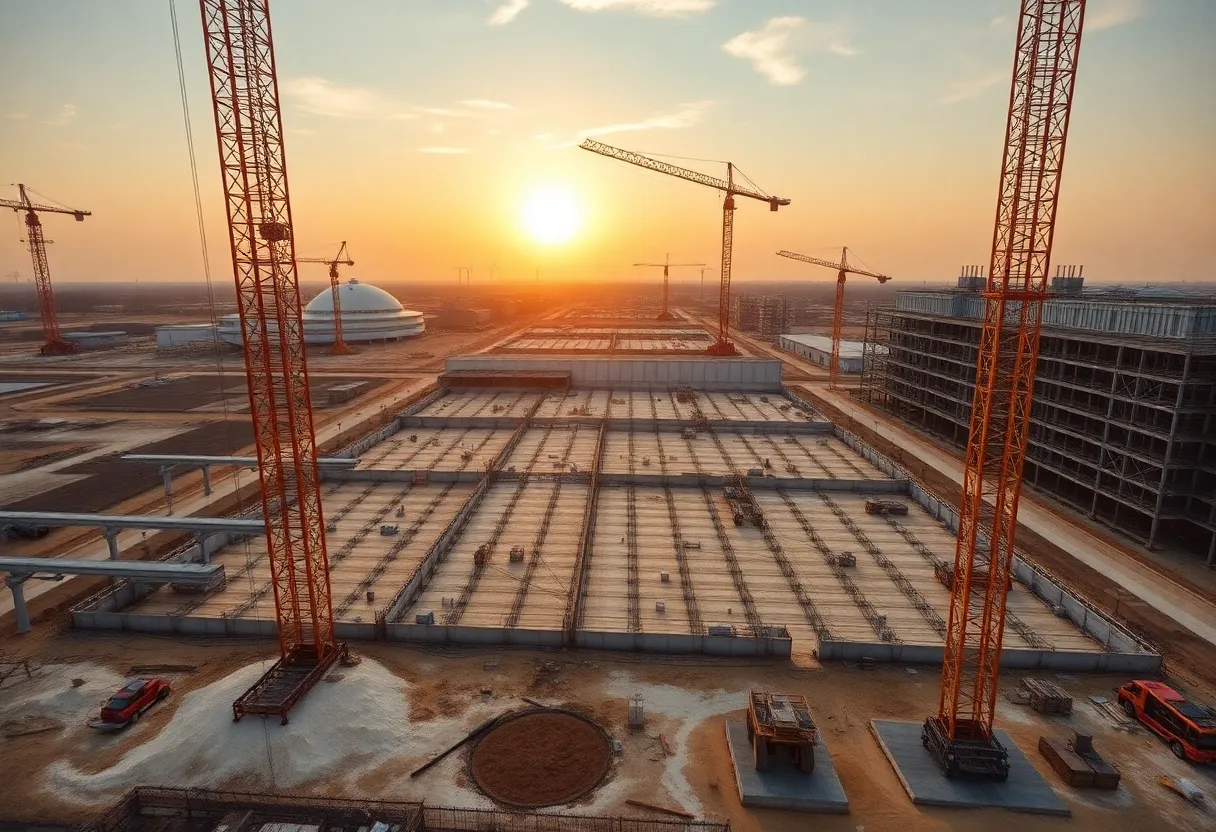News Summary
Intel Corporation has announced a significant delay in the timeline for its planned microchip factories in Ohio, now scheduled to open between 2030 and 2031. Originally set to begin operations in 2025, construction progress has slowed considerably, requiring Intel to align spending with current market demand. The project remains crucial for U.S. semiconductor manufacturing, receiving substantial federal funding and emphasizing national security. As part of broader strategic realignments, Intel is also scaling back manufacturing initiatives globally amid ongoing financial challenges.
Intel Delays Ohio Chip Factory Launch to 2030-2031 Amid Construction Slowdown
Columbus, Ohio — Intel Corporation has announced a significant delay in the construction and operational timeline of its planned microchip factories in Ohio. The company revealed during its quarterly earnings report on July 24 that the project’s opening has been pushed back to between 2030 and 2031, with the pace of construction slowing considerably.
Original Timeline and Recent Developments
The Ohio manufacturing facility was initially scheduled to begin operations in 2025. However, early in 2023, Intel had already postponed the factory’s opening date to at least 2030 or 2031. The latest announcement during the July earnings call indicates a further slowdown in construction activities. The specific impact on the factory’s opening remains uncertain, as the company has not provided a new precise timeline.
Construction and Budget Details
Despite the delays, some construction activities are expected to continue, including pouring concrete, steel work, and groundwork for support structures. Intel plans to spend more than $1 billion on the Ohio project in 2025 alone to maintain progress and fulfill contractual obligations. The company has committed to providing an annual status report and updated timeline to Ohio officials, with the next report expected in March 2026.
Strategic Reasons Behind the Delay
The slowdown forms part of Intel’s broader strategy to “optimize its manufacturing footprint” and improve returns on invested capital. Intel’s CEO, Lip-Bu Tan, stated that the company intends to align its spending with current market demand, emphasizing flexibility to accelerate construction if conditions improve. This approach reflects a cautious stance amid ongoing economic uncertainties and internal financial challenges.
Impact on Funding and Policies
The Ohio project was a centerpiece of federal efforts to bolster U.S. chip manufacturing, receiving $7.865 billion from the CHIPS Incentives Program, with at least $1.5 billion allocated specifically for the New Albany location. Additionally, an agreement with the Ohio Department of Development ties $300 million in grants to completing the factories by the end of 2028, underscoring the project’s strategic importance for U.S. tech manufacturing.
Broader Strategic Realignments
Alongside the Ohio project delays, Intel announced the suspension of planned manufacturing initiatives in Germany and Poland. The company is also consolidating its assembly and testing operations from Costa Rica to larger facilities in Vietnam and Malaysia, reflecting a broader effort to streamline global operations and reduce costs.
Financial Challenges and Workforce Adjustments
The delay and slowdown are partly driven by Intel’s ongoing financial struggles and a need for capital discipline. The company has recently cut approximately 15% of its workforce across its global operations, aiming to improve efficiency by eliminating roughly 50% of management layers. Intel’s foundry division that produces chips for external clients is also targeting layoffs between 15% and 20% as part of its restructuring efforts.
Implications for U.S. Semiconductor Manufacturing
The Ohio factories form a key element of Intel’s vision to restore U.S. semiconductor manufacturing, viewed as critical for national security and technological independence. However, the recent delays highlight the challenges faced by the industry in aligning capital-intensive expansion with fluctuating market demand and economic factors, emphasizing a strategic shift towards more cautious growth.
Overall, Intel’s announcement marks a noteworthy shift in its manufacturing strategy, reflecting both internal financial considerations and external economic and political factors shaping the future of semiconductor production in the United States.
Deeper Dive: News & Info About This Topic
HERE Resources
Additional Resources
- The Dispatch
- Wikipedia: Semiconductor
- Reuters
- Google Search: Intel Ohio factories
- Ainvest
- Google Scholar: Intel manufacturing challenges
- Manufacturing Dive
- Encyclopedia Britannica: Intel
Author: STAFF HERE WASHINGTON DC
The WASHINGTON DC STAFF WRITER represents the experienced team at HEREWashingtonDC.com, your go-to source for actionable local news and information in Washington, DC, and beyond. Specializing in "news you can use," we cover essential topics like product reviews for personal and business needs, local business directories, politics, real estate trends, neighborhood insights, and regional news affecting the area—with deep expertise drawn from years of dedicated reporting and strong community input, including local press releases and business updates. We deliver top reporting on high-value events such as the National Cherry Blossom Festival, Kennedy Center Honors, and the Washington Auto Show. Our coverage extends to key organizations like the Greater Washington Board of Trade and Destination DC, plus leading businesses in government contracting and technology that power the local economy such as Lockheed Martin and Amazon. As part of the broader HERE network, we provide comprehensive, credible insights into the dynamic landscape of the Washington metropolitan area.





